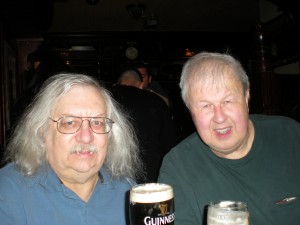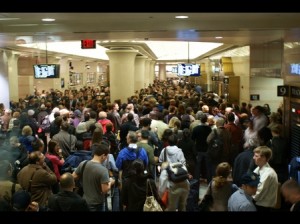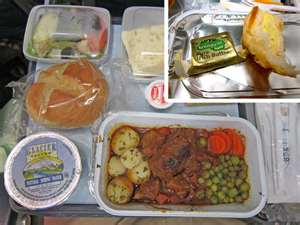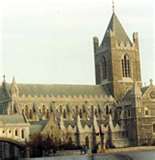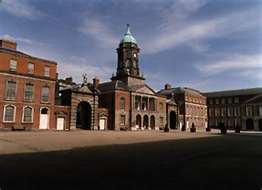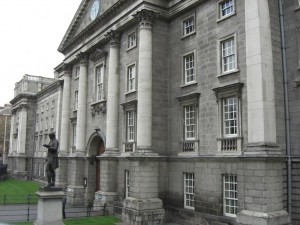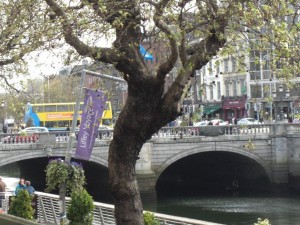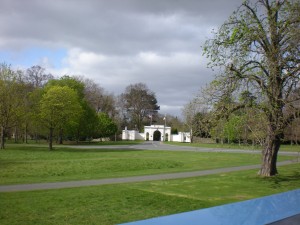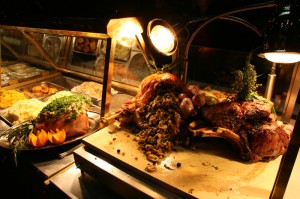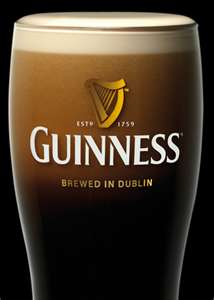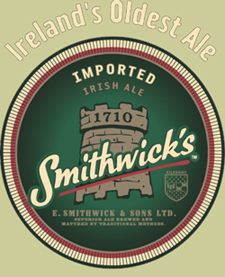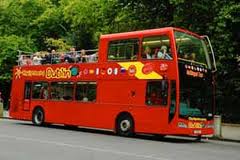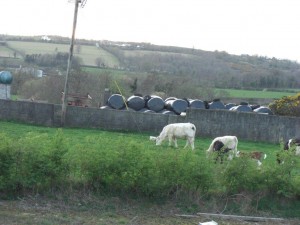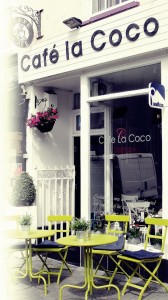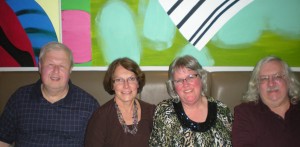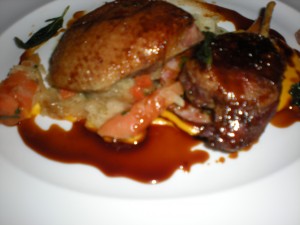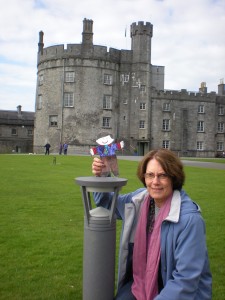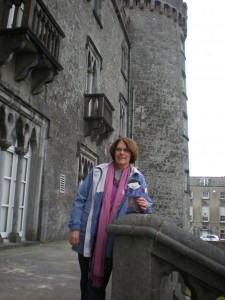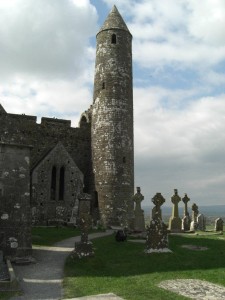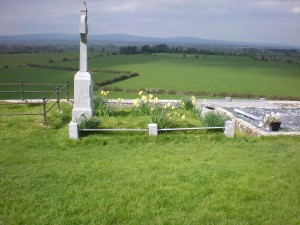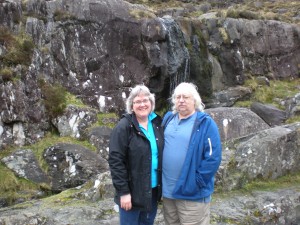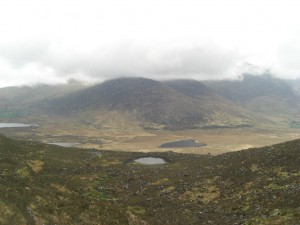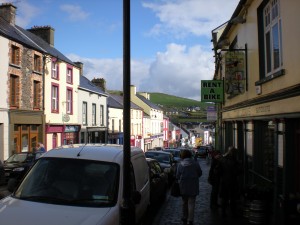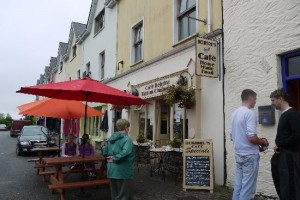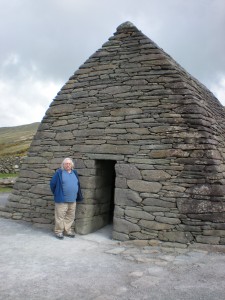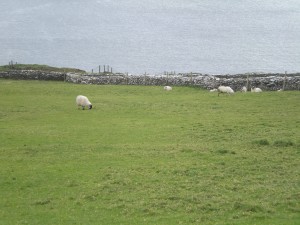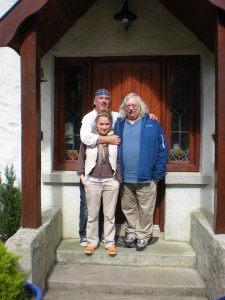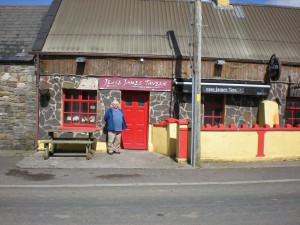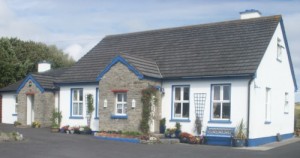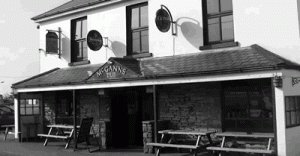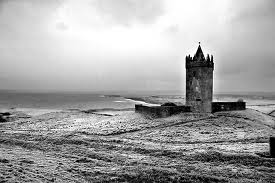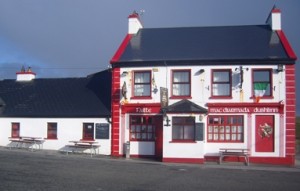March 29th The Irish Chronicles
Met the Zagatravelers at JFK after a number of phone calls (it seems they were separated in Penn Station with no way to communicate with each other except through me as their interpreter —
Well where the hell is he? the Zagstess must have been thinking when she left a message on my phone, “I think I lost HIM in Penn Station and I’m not sure what to do. He doesn’t have a cell phone.”
“I don’t know why she forgot to follow me through the rush hour traffic in Penn Station, I’ll try back later to see if you have heard from her.”
“Do you think I should stay in Penn Station? He wouldn”t have left without me?”
“If you do talk to her, tell her I’m at Jamaica Stop transferring to the A Train. I’ll be at the airport on time.”
“Tell him I still can’t find him. Do you think I should check an emergency room in Penn Station. Maybe something happened?”
“Hi, I’m downstairs at the airport. Tell her to meet at the ticket counter.”
“I think he did leave without me. I’m going to look for a cab. I hope I have enough time to make it to the airport.”
“Tell the Zagstress to meet at Aer Lingus when she gets here. She has the passports and I have the boarding passes.”
“If you get this message go to Aer Lingus, your ticket is there.”I leave for Zagstress. At this point only she has a cell phone that she won’t answer and he doesn’t have a phone and is being challenged by the public phone system, collect calls and someone who is trying to shine his shoes while coordinating that neither is lost, but they are just about to miss the planes. My worry is that Mr. Zag has all of the vouchers for the trip (I’ll take them, he says, we want them to be safe) and she has their passports so can’t get through security to give them to me. Besides that the trip is going smoothly.
“I don’t think I can check in without my passport. Tell her to meet at Aer Lingus.”
“If he’s not there I don’t have a ticket. Maybe I won’t make the plane.I suppose should return to Spoakane.” Not only is all of this happening but I can’t answer my phone because it is passing through the security tunnel at the airport. Have you got any gels the security officer asks me as we both look at the conveyor belt, ringing and ringing. They stop letting passengers through so I am on one side of the security screen and my ringing phone is on the other. I know it is the final time I will hear from them until I land in Dublin with no vouchers and no driver. Hang down your head Dan Dooley, sure boy I’m bound to die driving in Dublin.
There is a definite change in the air pressure in the terminal. A cold wind sweeps through and in the distance I see the Zagstess dragging her bag towards the gate and in the further distance I see the Zag stopping for a celebratory ice cream cone. They’re here. Time to relax and listen to the details of the lost couple. She says she can explain what happened quickly. .. two hours later we are on the commuter train from penn Station to JFK. The disappearance and projected dangers of getting separated in transit when your original plane is 1 1/2 hours late and you have a time restraint to catch your flight to Dublin. I look for a duty free store. I might have to drink on my way over.
And now for the food.
Aer Lingus Snacks
Smallest cans of ginger ale and tomato juice in the world. What you can say is that they are free.
The pretzels are left over from Allegheny Airlines that went out of business about the time I was traveling on them in college. True to form you were able to get a small but very hot portion of Beef and potatoes with gravy and cooked carrots and peas, did I mention the peas and carrots were COOKED well done!
Dublin —
VIKING DUBLIN
Dublin was founded by the Vikings. They founded a new town on the south bank of the Liffey in 841. It was called Dubh Linn, which means black pool. The new town of Dublin was fortified with a ditch and an earth rampart with a wooden palisade on top. In the late 11th stone walls were built around Dublin. The Danes also erected an artificial hill where the men of Dublin met to make laws and discuss policy.
In Viking Dublin living conditions were primitive. The houses were wooden huts with thatched roofs. None of them had chimneys or glass windows. In Dublin there were craftsmen like blacksmiths and carpenters, jewellers and leather workers. Other craftsmen made things like combs from bone or deer antler. There was also a wool weaving industry. In Dublin there was also a slave trade.
The Danes were slowly converted to Christianity and the first Bishop of Dublin was appointed in 1028. In his time the first Christchurch Cathedral was built.
In the wars between Irishmen and Vikings the little town of Dublin was sacked several times. Yet each time it recovered. Dublin soon grew to be the largest and most important town in Ireland. It may have had a population of 4,000 in the 11th century. That seems very small to us but it was a large town by the standards of the time when settlements were very small. By the late 11th century there was a suburb of Dublin north of the Liffey. In those days the people of Dublin traded with the English towns of Chester and Bristol.
DUBLIN IN THE MIDDLE AGES
In 1166, Mac Murrough, King of Leinster was forced to leave his kingdom and flee abroad, In 1169 he enlisted the help of a Norman, The Earl of Pembroke, known as Strongbow, and they invaded Ireland. When the Norman army approached Dublin the Archbishop was sent out to negotiate. But while the leaders talked some Norman soldiers took matters into their own hands and broke through the defences into the town. They set about killing the townspeople. The Viking king and his followers fled by sea.
In 1171 Mac Murrough died and Strongbow declared himself king of Leinster. The Viking king returned to Ireland with an army and attempted to recapture Dublin. The Norman army went out to meet them. The Vikings were crushed and their king was captured and executed. The native Irish under their High king O’Connor laid siege to Dublin but the Normans sallied out and routed them.
The English king was afraid that Strongbow would become too powerful and might call himself king of Ireland. To prevent that happening the English king came over to Ireland himself. Most of the Irish rulers submitted to him and he became Lord of Ireland.
The English king gave Dublin to the merchants of Bristol. It became their colony. Afterwards many people from Bristol and Southwest England came to live in Dublin. For centuries afterwards Dublin was ruled by the English or those of English descent.
The Viking inhabitants were afraid of the new English rulers and they moved to the north side of the Liffey. This new suburb became known as Ostmantown (Ostman is an old word for Viking). In time this became corrupted to Oxmantown.
In 1152 the Bishop of Dublin was made an Archbishop. Between 1172 and 1191 the Cathedral of Christchurch was rebuilt. In 1213 the parish Church of St Patrick was also made a cathedral.
In 1190 Dublin was devastated by fire (always a hazard when most buildings were made of wood). However Dublin was soon rebuilt.
The Normans built a wooden fortress in Dublin. In the early 13th century it was rebuilt in stone. The English king also rebuilt the walls of Dublin and strengthened them. Furthermore in 1229 Dublin gained its first mayor. Dublin grew rapidly and may have had a population of 8,000 by the 13th century.
Wine from France into was imported into Dublin. Iron was also imported, as was pottery. Exports included hides, grain and pulses. There were weekly markets in Dublin and after 1204 a fair. In the Middle Ages fairs were like a market but they were held only once a year for a few days and people would come from all over the country to buy and sell there.
In 1224 a conduit was built to bring fresh water into Dublin. In the 14th century the main streets were paved. But like all medieval towns Dublin was very unsanitary. Every householder was supposed to clean the street in front of their house although it is doubtful if many did! From time to time people were fined for leaving nuisances such as piles of dung outside their houses. In 1305 the town appointed 3 watchmen to patrol the streets at night, although it is doubtful if they were very effective.
In 1317 Dublin was besieged by a Scottish army. Following their victory at Bannockburn in 1314 the Scots invaded Ireland. Desperate efforts were made to repair the walls around Dublin and the bridge over the Liffey was destroyed to prevent the Scots using it. Finally the authorities set fire to the suburbs of Dublin (in case they provided cover for an advancing army). Unfortunately the fire got out of hand and destroyed far more buildings than was intended. Shortly afterwards the Scots abandoned the siege.
DUBLIN IN THE 16th CENTURY
In 1537 a rebellion occurred in Dublin. The Lord Deputy of Ireland (The English kings deputy) was summoned to London. He appointed his son Vice-Deputy to rule in his absence. This young man was Lord Fitzgerald. He heard that his father had been executed and angrily decided to rebel. He walked into the council chamber during a meeting and renounced his loyalty to the English king. He then left Dublin to gather support.
When he returned the Dubliners submitted and let him into the town but soldiers loyal to the king retreated into the castle and shut out the rebels. The rebels then murdered the Archbishop, which was a fatal mistake as it lost them public support. Fitzgerald sent a small number of men to besiege the castle then left Dublin to fight elsewhere. However the Dubliners turned against him and drove the men besieging the castle out of the town.
Later Fitzgerald and his men returned to Dublin but this time they were shut out. They attempted to burn a gate but the Dubliners went out and drove the attackers off. Reinforcements arrived from England and the rebellion collapsed. Fitzgerald was later executed.
The reformation happened peacefully in Dublin. When Henry VIII declared himself head of the church Dubliners actually celebrated. Henry closed the monasteries and nunneries, which caused some resentment but no actual rebellion. Henry also abolished the cult of relics but otherwise made few changes in religion. His son Edward and his daughter Elizabeth introduced far more radical reforms but in Dublin and the rest of Ireland they were mostly ignored. Most people continued to practise the Old Catholic religion.
In the 16th century Dublin prospered. For the upper and middle classes there was an impressive rise in living standards. A writer said that they lived in houses ‘so far exceeding their ancestors that they have thought rather to be another and new people than descendants of the old’. Previously most houses simply had a hole in the roof to let out smoke. In the 16th century chimneys became much more common. So did glass windows. Previously they were a luxury few people could afford.
Although conditions improved for the well off there were many beggars in Dublin. Many of them drifted in from the surrounding countryside.
Furthermore Dublin was still dirty and unsanitary, like all 16th century towns. And it suffered from outbreaks of plague. One outbreak in 1579 killed thousands. Another tragedy in 1596 when a gunpowder store in Winetavern Street exploded. More than 120 people were killed.
In 1591 Queen Elizabeth granted a charter for a new university, Trinity College. The first students were admitted in 1594.
DUBLIN IN THE 17th CENTURY
In 1604 Dublin was again visited by plague. Nevertheless Dublin continued to grow and may have had a population of around 20,000 by 1640.
In 1616 Dublin gained its first street lighting when it was decreed that a candle or lantern should be hung outside every 5th house on dark nights. In 1621 a Custom House was built. In 1637 Dublin gained its first theatre in Werburgh Street.
Following the English civil war of 1642-1646 Catholics were expelled from Dublin in large numbers, since their loyalty was suspect.
Plague broke out again in 1650. A large part of the population died, possibly as many as half. It was said at the time that Dublin was ‘exceedingly depopulated’. In 1659 the population was less than 9,000. Nevertheless Dublin recovered and prospered in the late 17th century.
In 1662 Phoenix Park was laid out as a deer park. In the mid-18th century it became a popular place for walking. Meanwhile for centuries Dublin had only one bridge. A second one was built in 1670. The first newspaper in Dublin was produced in 1685.
Dublin continued to grow and many new houses were built. In 1670 a law forbade any new houses to have thatched roofs because of the danger of fire. The new houses were usually of brick with tiled roofs.
Meanwhile in 1665 the Mayor of Dublin became a Lord Mayor and The Blue Coat School opened in 1669. It was rebuilt in 1773. The Tholsel, the town hall, was rebuilt in 1682 and a Royal Hospital for old soldiers was built in 1685. It is now the Irish Museum of Modern Art.
In the late 17th century the wool and linen trade with England grew. The industry was boosted by French Protestants who arrived in Dublin after fleeing from religious persecution.
DUBLIN IN THE 18th CENTURY
By 1700 Dublin had about 60,000 inhabitants and it continued to grow rapidly. Conditions continued to improve in the 18th century, at least for the middle and upper classes. Dublin became a more refined and genteel city (for the well to do) but there was still a great deal of poverty.
Marsh’s library was built in 1701 and in 1703 the Irish Parliament passed an act for building a workhouse where the destitute (of whom there were many) could be housed and fed. Then in 1711 Dublin gained its first fire brigade and St Ann’s Church was built in 1720.
Dublin grew rapidly in the 18th century. Streets such as Aungier Street, Cuffe Street and Dawson Street were built early in the century. Merrion Square was built in 1762.
A number of hospitals were founded in the early 18th century. In 1729 a foundling hospital for unwanted children (of which there were many) opened in James Street. Jervis Hospital opened in 1721 Mercers Hospital was founded in 1734 by Mary Mercer. In 1745 St Patrick’s Hospital for the mentally ill was built and in 1752 Rotunda Maternity Hospital. In 1794 a dispensary was founded which gave free medicines to those too poor to buy them.
College Park was laid out in 1722. In the mid-18th century Phoenix Park became a fashionable place for the well to do to take walks. Reanelagh gardens opened in 1776. The Botanic Gardens were made in 1795. In the late 18th century St Stephens Green became a park.
Parliament House, a new meeting place for the Irish Parliament was built in 1735. Leinster House, which is the present home of the Irish Parliament was built in 1745 for the Duke of Leinster. A new Custom House was built in 1791. The Royal Exchange was built in 1779 and was later (1852) made the City Hall. In 1757 the Irish Parliament passed an act, which created a body of men with powers to widen the streets. In 1773 a body of men with power to pave, clean and light the streets of Dublin was formed. Their powers were transferred to the city council in 1851.
In the mid 18th century stagecoaches began running from Dublin to other towns such as Kilkenny, Cork and Belfast. There was a sizeable coach making industry in the city. There were also many sedan chairs for the well to do and Grand canal opened in 1779. O’Connell Bridge was built in 1790.
In 1786 Dublin gained its first police force and Kilmainham prison was built in 1796. Meanwhile Guinness was first brewed in Dublin in 1759.
DUBLIN IN THE 19th CENTURY
By 1800 the population of Dublin had risen to around 180,000. In 1803 and 1804 fever hospitals were opened in Dublin. The most common fever was typhus, sometimes called goal fever, because it was so common in jails. Lice spread typhus. Poor people frequently had lousy clothes. There was still a great deal of appalling poverty in the city with many families living in one room. In all European cities at the time there was terrible poverty but it seems to have been particularly bad in Dublin.
In the early 19th century several new bridges were built across the Liffey. O’Donovan Rossa bridge was built in 1813. Ha’penny Bridge (also called Liffey Bridge) opened in 1816 and Kingsbridge opened in 1828. (Its name was later changed to Heuston Bridge). Queen Victoria bridge, now Rory O’More Bridge, was built in 1859.
The Royal Canal was opened in 1817. Meanwhile a column with a statue of Nelson on top was erected in 1808. It was destroyed in the 1960s. In 1825 St Mary’s Protestant Cathedral was built.
However in 1855 the Dublin fair, which had been held in Dublin each year since the 13th century, was stopped.
Gradually during the 19th century conditions in Dublin improved. In 1824 a gasworks was built in Dublin and gas was used to light the streets from 1825. The first electric lights in Dublin were switched on in 1881 but electric light was a rare novelty until the early 20th century.
In the early 19th century sewers were laid but only in the middle class districts of Dublin (poor areas could not pay the necessary rates). But the sewers were extended in the 1850s, 1860s and 1870s.
The railway reached Dublin in 1834 when a line to Kingsbridge was built. Horse drawn buses began running in Dublin in 1840. They were followed by horse drawn trams in 1872.
From 1838 there were workhouses in Dublin where the destitute were fed and housed. During the potato famine they were overwhelmed by the numbers fleeing starvation in the countryside. Soup kitchens had to be set up in the streets to try and feed them. Although the population of Ireland fell sharply after the famine the population of Dublin actually rose because of the number of starving people fleeing to the city.
Amenities in Dublin greatly improved in the 19th Century. In 1853 an industrial exhibition was held in Dublin on Leinster Lawn. Zoological Gardens opened in Phoenix Park in 1830. Portobello Gardens opened as a park in 1839. A Natural History Museum opened in 1857. The National Gallery of Ireland opened in 1864. In 1882 a memorial to O’Connell was erected in O’Connell Street. The Gaiety Theatre opened in 1871. The National Museum of Ireland opened in 1890.
The Catholic University in Dublin was founded in 1845. Catholics were allowed to attend Trinity College after 1873 but the Catholic Church disapproved of Catholics going there. Glasnevin Catholic cemetery opened in 1832. In 1892 a new fruit and vegetable market opened and in 1897 a new fish market opened.
DUBLIN IN THE 20th CENTURY
On 24 April 1916 the Easter Rising took place in Dublin. The insurgents occupied the Post Office in O’Connell Street where their leader Patrick Pearse announced an Irish Republic. However the British crushed the rebellion and the insurgents surrendered on 29 April. The British then court-martialed the insurgents and 15 of them were executed. Public opinion in Ireland was appalled and alienated by the executions.
However conditions in Dublin continued to improve during the 20th century. A new network of sewers was built in Dublin in 1892-1906. Butt Bridge was built in 1932. Talbot memorial bridge was built in 1978 and Frank Sherwin memorial bridge in 1982. East Link toll bridge was built in 1985. In the early 1990s a ring road was built around Dublin.
Meanwhile in 1904 Abbey Theatre was built. Gate Theatre followed in 1930. In 1907 the Irish International Exhibition was held in Herbert park. It was an exhibition of industrial and commercial goods. However in the early 20th century there was still appalling poverty in Dublin with perhaps a quarter of families living in one room. In 1912 slum demolition began when houses north of the Liffey were demolished and replaced with proper houses. Slum clearance on a large scale began in the 1930s and continued through the 1940s and 1950s.
In 1934 the Old Dublin Society was formed. In May 1941 the Germans bombed Dublin killing 28 people. Dublin Civic Museum opened in 1953. In 1962 the James Joyce Museum opened.
In 1966 a Remembrance Garden was opened for all those who died in the fight for independence and the Friends of Medieval Dublin was founded in 1976.
In the 1960s and 1970s redevelopment of the city centre took place, some of it controversial as it involved the demolition of fine old buildings. In the late 20th century the population of the city centre fell as areas of slum housing were demolished and replaced by new estates on the outskirts of the city but in the 1990s new apartments were built in the city centre.
In the late 20th century traditional industries such as textiles, brewing and distilling declined but the city council built new industrial estates on the outskirts of the city and new industries like electronics, chemicals and engineering appeared.
In 1975 the Dublin Institute of Higher Education was formed. In 1990 it was made Dublin City University. The Catholic Church reversed its ban on Catholics attending Trinity College in 1970.
In 1988 Dublin celebrated its millennium. (Dublin was actually founded in 841 but in the year 988 an Irish king forced the townspeople to pay taxes to him. That year marks the beginning of Dublin as an Irish town). Also in 1988 Anna Livia Fountain was built in O’Connell Street. A statue of James Joyce was erected in Earl Street North in 1990. In 1985 a Jewish Museum opened in Dublin. In 1991 the Dublin Writers Museum opened. Also in 1991 the Irish Museum of Modern Art opened.
After 1991 Temple Bar was renovated. The streets were pedestrianised and it now contains bars, shops, restaurants and art galleries. Furthermore George Bernard Shaw’s birthplace in Dublin was opened to the public in 1993. Also in 1993 Dublinia, a Museum of Medieval Ireland opened. A Visitor Centre in the Custom House opened in 1997.
Meanwhile Powerscourt Shopping Centre opened in 1981 in a house built in 1774. St Stephens Green Shopping Centre was built in the late 1980s and Jervis Street Shopping Centre opened in 1996.
DUBLIN IN THE 21st CENTURY
In 2000 a new pedestrian bridge, the Millennium Bridge was opened across the Liffey and in 2003 The Spire was erected. Trams returned to Dublin in 2004.
We arrived after the night flight, weary and full of a little anxiety. We were going to be tackling one of the most challenging cities in the world from the wrong side of the car on little sleep. The back seat duo got their claws out and were ready to let us know up front when we made a mistake. (We didn’t consider it a mistake that we drove 30 miles into town just because the Dan Dooley people said it was a 10 mile trip. We just wanted to see some of the lesser known and more interesting parts of the city several times more than our original itinerary called for. We nudged a few mirrors with our mirror but managed to avoid any softer forms of obstructions on the foot paths. We got checked in the Maldron Hotel and found out that even at a 4 star hotel things like wash cloths are not much of a high priority. They had these strange looking boxes on the desk that eventually lighted up with someone talking about the queen, a hurling match and a wee bit of rain in the forecast. The box wasn’t black and white but the color quality on these large contraptions wasn’t good and when I asked about high def they told me they would speak louder and started shouting at me that the breakfast wasn’t included and that the first floor meant rooms on floor one and that the ground floor is where you get off and what was I talking about the garage floor, there is no parking at the hotel. It also appeared that our alternate route into town had taken us under some Irish camera in the sky (wouldn’t St. Patrick or the nuns had fun with a camera coming down from heaven) and that our license plate had agreed to pay a toll within 24 hours or else the people at Dan Dooley would be informed that we should pay an extra alternative route tax of 30 euros instead of the 3 euros we had been assessed. We found a pay station that also had milk, large sandwiches condensed down to bite size when warmed up (think of Zip Trip deli) and yoghurt. Sandwiches were better than they looked and we were hungry. We decided to take an hour to rest and contemplate our journey thus far — it wasn’t one to write home about.
I learned my first Irish lesson — “it isn’t much of a walk” means it would be an expensive taxi drive for the desk clerk and they couldn’t afford one of those on their wages so their recommendation would be “walk tourist.” The walk along the quay brought us to O’Connell street about forty minutes into our “Couldn’t be much more than 10 minutes from here” conversation. We crossed the River Leftout to pay homage to the statue of O’Connor — I think he was the singer on Lawrence Welk who did Danny Boy (written by a Jewish lad according to our tour guide). It might also be we just took a wrong turn. We walked for several more hours on our ten minute tour through Temple Square (perhaps that is another city — this one seemed a bit more animated than the other Temple Square in Salt Lake). We asked a man of ample portion where to go for a good pub meal and there was no lingering or contemplating.
“That would be O’Neill’s just up there around the corner.” And our first meal in Ireland was about to take place. http://www.oneillsdublin.com/
Lamb with mint sauce — The lamb at O’Neills had had a chance to grow up a wee bit. The leg was about the size of a teenage sheep. It was certainly not your seven hour slow cooked lamb at home for tenderness but it had lots of flavor and was big enough to make one of the younger Flintstones happy with the portions. It was served with a mint sauce, potatoes and a green mound which we determined to be peas.
Ham with potatoes — It gets hard to tell the difference between ham and bacon. I think the main thing is what time of day it is served and how thick it is sliced. This was evening and the slices thick — Ham. It was also served with horseradish sauce, potatoes and a little bigger mound of peas. These mounds resemble the Great Burren in both landscape and texture.
Stuffed Pork — The stuffed pork was a poultry seasoning type bread stuffing. It came with potatoes and peas which wound around the pork chops like the Dingle Peninsula (even though at the time I mentioned it looked more like Manhattan — now I’ve gone to the Dingle and can write in future time. Something us monks and knights can do.)
Guinness begins in 1759 at St. James Gate Brewery, Dublin. Stout referred to the beer’s strength originally but now is more about body and color. He sold the concoction to local workers and it was referred to as porter’s beer. As we travel Ireland we are told that the name of Guinness is going to come up almost every where we go. (like: before 1939 if a Guinness brewer wished to marry a Catholic his resignation was requested.) I ordered my first Guinness at O’Neill’s pub in Dublin. People say it tastes different there — perhaps it is the River Leffie water. I don’t want to be part of the cult that makes such claims, suffice it to say that I had more than one pint as a taste test.
Smithwick’s (smitticks) is an Irish Red Ale that was originally brewed in St. Francis Abbey in Kilkenny (heading there tomorrow). The monks started brewing beer there in the 14th century. The company was actually started in 1710. I also did a taste test between Smithwick’s and Guinness. It is best to be thorough.
Breakfast at the Maldron House on Cardiff Lane There are several view from the Maldron Hotel, our room looked over the post vans but I am told that if you were lucky you could see the River Leffey. The breakfast was the start of our typical farm breakfast — eggs, black pudding, bacon, soda bread, etc. A convenient place to stay (but a walk at night to the Temple Bar but probably only a 10 euro cab ride back) and if you are unlucky enough to be driving you can park at a garage about two blocks away with validation from the hotel.
Hop On Hop off tips — We should have gotten a ticket on Friday afternoon and rode around Dublin to get a lay of the land and give us some ideas where we might want to visit. The bus lets you board for 24 hours so I would do this on the first afternoon and then use it to transport me to places I want to go the next day. Cheap, good overview of city and history and your own personal double deck taxi on the second day. We didn’t do this but I wish we would have. We did take it around Dublin and despite there being stress with tourists who talked through the narrator’s historical comments it was much better than navigating the streets. Trinity College, Guinness, President of Ireland’s house, the prison Kilmainam Gaol (now a museum) where many people in the Irish rebellion were imprisoned and some executed by the British. In the 18090’s there was no segregation of the prison population (many went here for debts) so men,women and children were often incarcerated with up to five in one cell. They were given a single candle for light and heat (not unlike some of our B&B’s).
March 31st Kilkenny
We left Dublin after our hip hop tour and headed for Kilkenny. (First we had to pay our toll. IF you get on the M50, and it is hard not to end up there a couple of times a day, you might pass by an eye in the sky that says you have to pay a toll within 24 hours online or at a payzone station or you will turn into a troll which apparently is not a grumpy leprechaun — I was corrected on that by the Indian clek at the SPAR store).
We drove into Kilkenny at a break neck pace of stop and go. “Ye are so lucky it is not the busy season, ye would never find a parking spot.” We had just parked about a half mile from the center of town, far enough way that you couldn’t see the castle. We walked through a couple of stone walls and entered Lower Patrick Street where we spotted a small coffee shop, Cafe La Coco.
“In order to be irreplaceable one must always be different,” Coco Chanel. This spot had incredible coffee (Lavazza) — Black Forest Cake, Bananacoffee cake, sweet crepes and a selection of sandwiches. The women brewed up Macchiato latte while they told us about the city. I had the name of a restaurant I wanted to try and they wrote down on a piece of paper what they thought the best restaurant in town and it was the same one — all we have to do is make reservations and get there. How hard could that be? If you are in Kilkenny this is wonderful spot to stop and smell the beans.
Mr. Zag had emailed our B&B for reservations. When we arrived they greeted us with closed arms — never got such a request. Did they have room? They did have room, they just didn’t have much heat. (This means no heat at all.) We looked at the rooms and the beds were piled high with blankets. How cold could it get in April in Ireland? We walked around the farmhouse, watched the new born calfs seek out their moms and prepared to eat at one of the best restaurants in Ireland.
Campagne–top 100 restaurants in Ireland
Garrett Byrne and Brid Hannon opened Campagne in 2008 and what better place to open a modern French restaurant. All they had to do was to figure out how to use the local ingredients in their French inspireddishes. Byrne worked as head chef at Chapter One in Dublin when they were upgraded to a Michelin One Star Restaurant and was awarded Best Chef in Dublin in 2006. The address we were given was on Barracks Street which the life time residents of the B&B had heard of but weren’t quite sure how to get there even though it couldn’t be more than 10 minutes from the B&B. We left a half hour before our reservation (the owners contacted the restaurant for us as their arms began to pry away from their bodies into more of an open arm embrace). We followed the route and when we got there we couldn’t find the street. It was getting dark and we started looking for it and pretty soon we had fallen into the hole and were winding our way thorugh one way streets with big toadstools and mirrors that made it seem like we had passed that one building once before. After an hour of being lost we were stopped by a man who asked, “Are you lost?” We didn’t want to admit that right away so we said we were temporarily on a bad route. We gave him the address and he too was a lifetime resident who wasn’t quite sure where it was. We followed him through a couple of roundabouts and came to stop about a 100 yards from our first destination. He got out of the car and said he was going into the shop and see if they knew where this place was. He came out with a young woman who was pointing to a building next door. Even with the knowledgeable finger pointing towards the front door it was hard to see the restaurant. We thanked the man who told us to look for Arches Lane next time. We sent the wine lady in to see if they were angry we had arrived at 10:10 instead of 9:30 for dinner. They were about to close but they would still seat us. We walked in and the restaurant was completely full except for our table. The walls had large canvas paintings depicting the seasons. This place was certainly not your old time Irish pub. We read the news that the chef was rated as one of the top 10 hot chefs to watch. http://www.campagne.ie/ambience.php
The menu starts with a list of their local suppliers from free range chickens to organic vegetables to wild game, organic lamb and pottery designed for their restaurant.
Appetizers:
Cured organic salmon, oyster tempura and cream, samphire (a marshy vegetable that resembles asparagus which gives it a salty taste), cucumber and dill.
Terrine of shellumsrath goose, muscat grapes, celeriac puree, walnut toast
Hare sausage, mushroom duxelle and smoked bacon (We tried this dish. It had a cold smoked flavor to it with lots of earthy tones from the mushrooms)
Cured local beef, organic beetroot and red onion chutney, parmesan croquette
Spinach and ricotta parfait, whipped goats cheese and tomaton vinaigrette
Deep fried smoked haddock, poached organic egg, spring onion hollandaise (this was our second appetizer. Again the haddock had an amazing smoked flavor, the yolk of the egg was a brilliant orange and the hollandaise had the right tang to complement the dish).
Entrees:
Rump of comeragh lamb, tomato braised carrot, lamb breast, black olives, samphire
Fillet of angus beef, cauliflower gratin, red wine and shallot reduction sauce, oyster mushrooms
Turbot, sprouting broccoli, saffron and mussels
Challans duck breast, choucroute, morteau sausage, chantenay carrots and mustard
Gratinated pea and leek canneloni, wilted lettuce and asparagus
Pigs trotter stuffed with ham hock and parsley, kale, beetroot and caper jus (Mr. Zag had this dish. It was tender and lots of great flavors from the fat it was cooked in but you did have to leave a pile of fat on the side which was greater than the meal served to you.)
Sea Bream, poached scallop canneloni, bubbled fennel and samphire, basil sauce (Mrs. Zag and the wine lady had this dish. Ever notice how often they have shellfish when we are sharing dinners? They forget that things like crab, scallops, prawns,lobsters and oysters are part of the shellfish family.)
I had the special duck which also was stuffed with sausage and had a madeira jus, cabbage braised with horseradish.
The dishes were accompanied by a cannister of mash potatoes and home baked bread.
Dessert:
Pear Crumble with custard and caramel ice cream. The caramel sauce danced a little jig around the crumble before spreading itself over the ice cream.
Mascarpone and white chocolate cheesecake with rhubarb ice cream.
Chocolate mousee and vanilla ice cream
Orange and campari jelly, orange cream and chocolate ice cream
Chocolate truffles
French and Irish cheeses, oatmeal biscuits
The service at Campagne was very good; they were very gracious to start us on our food journey so late in the evening and never hurried us to get on to the next course; the decor and menu said nouveau Irish chef and decorators; it was a good wine list with several options and price ranges from different regions of the world; the food just said to me –put in time capsule and enjoy the experience with friends.
April 1 and 2 — Kilkenny Castle, Rock of Cashel, Tralee and Dingle Peninsula
Kilkenny Castle
Kilkenny Castle http://www.kilkennycastle.ie/en/TouroftheCastle/ATouroftheCastle/ Situated above the River Nore the castle was built in the 13th century. The original stone castle was built for William Marshal and for almost 600 years was the residence of the Butler family. (1360-1967) You can view the castle’s history and architecture online. The history of Ireland (Norman invasions, British invasions before the Beatles, potato famine, etc.) seems one of pain. This tiny island has challenging weather, treacherous coastlines, islands that could only be inhabited by monks. Perhaps people like it because the people have survived all of these things and go on ready for the next conflict in their lives. The collapse of the Celtic Tiger seem to be a foregone conclusion — they just didn’t know it was going to happen so fast and effect so many other parts of their country (sound familiar?) The grounds are amazing at this castle and on this Sunday there were a few families have tea watching their friends compete in a fund raising run around the grounds. A quiet doom in a magnificent castle setting that has ghosts running through its basements trying to play hide and seek with the Norman invaders. One of our travelers rescued a very thin man and took a picture of him to take back to her school children — she called him Flat Stanley. She hoped to smuggle him back to the states.
The Rock of Cashel
As Navigator I found another Amazing route to get us from Kilkenny to Cashel. There are rumors that you can see the castle from every direction for miles. Let me tell you that if you go through Ballyclovan you aren’t going to see the castle right away. In fact, you might not even see Ballyclovan. You can witness herds of sheep up close if you know how to find the shortcuts. The narrow road wouldn’t suffice as a driveway in most rural areas of the Palouse. (100km speed limit) There is a lot of lore about the Rock. Some say it originated in the Devil’s Bit 30 km north of Cashel. When St. Patrick banished Satan from a cave, the result was the Rock’s landing in Cashel. That’s quite a shot put. It is also the site where Patrick the snake charmer converted the King of Munster in the fifth century. Now I would have to admit if somebody tossed a rock that big 30 km I would have to consider joining his side. It stayed Munster’s house until the Norman invasion in 1101 when he gave it to the Church. Might as well he was almost seven hundred years old and the upkeep must have been killing him. We think old in Spokane is when the fire of 1889 destroyed most of the downtown area. The Rock n Roll’s chapel was built in 1127 and the church in 1235. The English had to attack the place in 1647 (nothing better to do than seek out this rock?) In 1749 the Anglican Archbishop decided it wasn’t such a good commercial viability, there just weren’t enough sheepherders that needed converting, so he started gutting the castle including taking the roof off the cathedral. It is the ruins that you see now and if you walk around the grounds you can see that the British would have been able to see any flock of sheep sneaking up on them from any direction. You can’t pull the wool over the British eyes.
Cashel Outpost — looking for invaders
Tralee — is the capital town of Country Kerry. The town was founded in the 13th Century by Anglo Normans and takes it name from the River Lee which flows into Tralee Bay. (Begin to notice how many towns have rivers flowing into bay and oceans — it’s an island in the extreme). The medieval landscape would have housed the Great Castle and the Domincian Friary founded by John Fitz Thomas Fitzgerald. The Earl of Desmond (the first saxophone player?) used it as a base to build their power in province of Munster (named after the cheese?) The town suffered was burnt by a fire in 1587 after they pissed off Queen Elizabeth of England. Elizabeth then granted Tralee to Edward Denny (who later traded it for breakfast restaurant in the USA) after spending 300 years. The town charter was established in 1613 and in the 19th century the modern Tralee began to take shape. The canal was built in 1846 and the railway arrived in 1859. Our story begins 40 years ago when a troupe of two Zagsters were roaming Ireland, penniless, no money for even a Guinness when they were picked up by two potential axe murderers who turned out to be good Samaritans, got them a Guinness and now forty years later the Zagsters have returned to visit their friends (whom they have visited over the years). They offered us rooms in their former B&B (retirement now makes it possible for them to take it easy although they still own the Mountain Lodge). Sheila gave us a late dinner (salad, smoked salmon, brown bread, jams, coffee) and had breakfast waiting for us when we woke up in the morning. It is the kind of hospitality you hear about in Ireland. Teddy (Paddy’s brother) and his wife, Mary, joined us both evenings for dinner and conversation. It was a great visit for the Zagsters and a wonderful place to use as a base to visit Dingle the next day.
We went to the Carleton Hotel for dinner in Tralee after our trek to Dingle. Our hosts and Mike and Mary’s friends of 40 years.
Dingle Peninsula
We drove over Connor Pass cutting through the mountains on the way to Dingle which gave us great views of both Dingle and Tralee Bays, the Ring of Kerry. This is the highest mountain pass in Ireland.
Dick Mack’s http://dickmacks.homestead.com/thebar.html In the town of Dingle everyone seems to know Dick Mack’s Bar. You walk up a steep hill from the harbor on Green Street. You pass the library (although one of our troupe stopped to see how the Zag recruiting was going in the library) and St. Mary’s church before you reach the bar. From the outside it is hard to tell it is a bar — even when you walk in it looks like it could be a cobbler’s shop (which it was and still is to some extent). You can smell must, leather and beer. The shelves are lined with old shoes and the back bar has an impressive array of whiskies and the ever familiar Guinness beer tap makes you feel at home. At one end I kept looking at a cabinet that seemed familiar. I thought it might have something to do with my days in the antique world but I knew it was something more familiar than that. I finally realized it was a confessional which the bartender confirmed that had a chair. He said he often served up a glass of whiskey to the old patrons. It is too bad we didn’t have time to be at Dick Mack’s in the evening because I am told that is when it turns into a magical place. 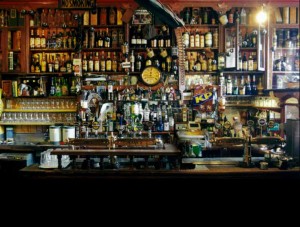
Deirdre’s
A small restaurant on Orchard Lane (hidden from Main Street but the locals know how to find it including Oliver Mack — the son and current owner of Dick Mack’s was how he was introduced). We tried the Seafood Chowder with eye of prawn and the parsnip vegetable soup. Big bowls of steaming broth, whole prawns and parsnip rounds served with a slice of bread. Deirdre also had several desserts including an apple cake with ice cream.
We went out to the Peninsula and saw buildings that date back hundreds of years. The Slea Head Drive passes through Ventry with Mount Eagle on the right, the Atlantic Ocean and Dingle Bay on the left. We stopped at the Beehive Huts at Fahan. The Irish were said to have fled here after the Normans pushed them off the good land. (Dingle Peninsula has also been the scenery in several movies including Ryan’s Daughter and Far and Away. In parts of the Dingle Peninsula Gaelic is readily spoken (Corca Dhuibhne). We went to the Gallarus Oratory. It is an 8th century Christian site set on farmland overlooking Smerwick Harbor. The beehive stone building is still weather proof after a thousand years!!
We drove up to Listowel/Astee to visit our friends. Rebecca Carroll has exhbited in San Francisco, New York and Grande Ronde Cellars. Her husband, David Griffin, and family live on the Estuary of the Shannon River just before it opens up into the Atlantic Ocean.
David Griffin took me by the criminal’s birthplace who killed my great Uncle William Westfall.
April 3rd — Doolin
Toomullin B&B — Small B&B suffering through the economy and the volcanoes in Iceland. After taking a wrong turn at the Doolin intersection (50% chance, you would think we would go the right way once in awhile) we backtracked to our accommodation. Once again we found that turning on the heat wasn’t that popular. We were a few minutes walk from two pubs so we parked the car for the day.
Doolin is renowned for it’s traditional Irish music and it’s beautiful surroundings; with the Cliffs of Moher and the Burren just a short journey away or take a ferry out to the Aran Island.McGann’s Dinner — We walked into
McGann’s and were told that the fresh sheet was on the chalkboard. Mussels, Beer Battered Fresh Fish & Chips With Mushy Peas & Salad McGanns Famous Irish Beef Stew with Homemade Brown Bread Slow Braised lamb Shank on a Mild mustard Mash and Thyme jus. We ordered a Guinness and enquired about a shot of Midleton’s.Midleton’s Very Rare Whiskey can go for 14 euros or more at a bar. Each bottle is individually numbered and signed by the Master Distiller. McGann’s was having an Irish Session later in the evening. It is rumored that Doolin was the inspiration for the Lord of the Rings.
McDermott’s Music — Irish Songs
McDermott’s Pub has been in the McDermott family since 1867. When you go in to pub there is a restaurant and bar to the left and a smaller bar to the right where the music starts about 9:00 p.m. (that’s about as close as you will get to finding out about a starting time.) When it gets busy one of the musicians might get up from a table and start playing or they might show up about 9:30 and start plugging their instruments into the amps. McDermott’s Pub has live traditional music every night from early spring to late in the fall and on weekends throughout the year. It was awarded the Traditional Irish Music Pub of the Year 2002. We spent most of the evening here listening to a duo singing Irish songs and playing guitar/banjo.

